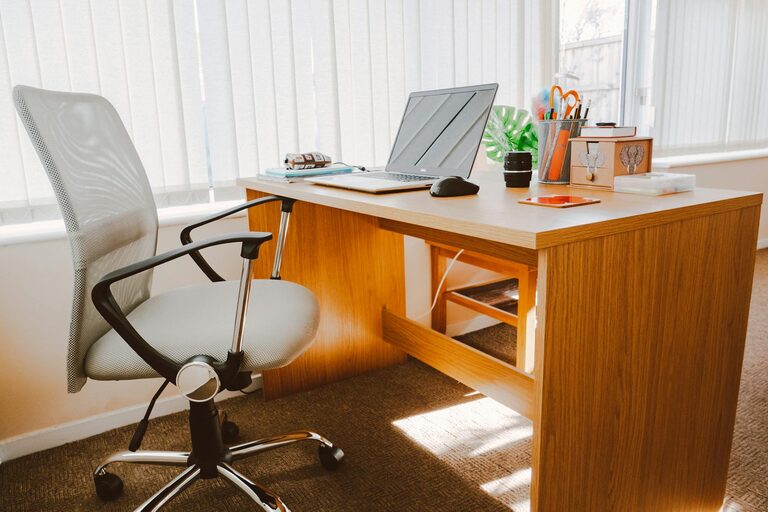Desk Setup Tips for Focus and Comfort: Create Your Ideal Workspace

Creating a desk setup that promotes focus and comfort is essential for getting the most out of your workday, whether you’re working from home or in an office. A well-organized, ergonomic workspace can reduce distractions, minimize physical strain, and inspire productivity. In this post, we’ll explore practical tips for designing a desk setup that supports your mental clarity and physical well-being.
Why Desk Setup Matters
Your desk setup directly impacts how you work and how you feel throughout the day. Poor ergonomics can lead to discomfort, fatigue, and even injury, while cluttered or uninspiring spaces can sap your motivation. By taking time to optimize your workspace, you create an environment that encourages focus, creativity, and comfort.
Essential Desk Setup Tips for Focus and Comfort
1. Choose the Right Desk and Chair
Start with the foundation of your workspace:
– Desk height: Your desk should allow your arms to rest comfortably with your elbows at about a 90-degree angle when typing.
– Chair support: Invest in an ergonomic chair with adjustable height and lumbar support. Your feet should rest flat on the floor or on a footrest.
2. Position Your Monitor Correctly
Proper screen positioning reduces eye strain and neck pain:
– Place the top of your monitor at or slightly below eye level.
– Maintain about an arm’s length distance between your eyes and the screen.
– Tilt the screen slightly upward for the best viewing angle.
3. Declutter and Organize
A tidy desk reduces distractions and promotes a calm mindset:
– Keep only daily essentials on your desk.
– Use organizers, trays, or drawers to store pens, papers, and gadgets.
– Consider cable management tools to keep cords neat and out of the way.
4. Optimize Your Lighting
Good lighting supports focus and reduces eye strain:
– Use natural light when possible.
– Position your desk perpendicular to windows to avoid glare.
– Add a desk lamp with adjustable brightness and warm light tones for evening work.
5. Maintain Good Posture
Ergonomics aren’t just about your furniture; your posture matters too:
– Sit with your back straight and shoulders relaxed.
– Avoid slouching or leaning forward.
– Take frequent short breaks to stand or stretch every 30-60 minutes.
6. Personalize Your Space
Adding personal touches can boost your mood and motivation:
– Use plants to bring a bit of nature indoors—plants can also improve air quality.
– Include a few meaningful photos or art pieces.
– Keep your color scheme soothing and consistent.
7. Use Accessories Wisely
Smart accessories help keep you comfortable and productive:
– An external keyboard and mouse can improve ergonomics.
– A wrist rest supports your hands while typing.
– A monitor riser or laptop stand can help position your screen properly.
Bonus Tips for Staying Focused at Your Desk
– Set a dedicated workspace: Try to designate your desk strictly for work to build a mental association with productivity.
– Limit digital distractions: Turn off non-essential notifications during focus time.
– Use noise-cancelling headphones: These can be great if you work in a noisy environment.
– Keep a water bottle nearby: Staying hydrated keeps both your body and brain functioning well.
Final Thoughts
Investing a little time and effort into your desk setup can make a big difference in how comfortably and effectively you work. By focusing on ergonomics, organization, lighting, and personalization, you create a space where focus naturally flourishes. Remember that your ideal setup may evolve over time, so be open to experimenting and making adjustments as needed.
Your desk is more than just a place to work — it’s a tool that, when set up thoughtfully, supports your best self every day. Start with these tips and tailor your workspace to suit your unique needs for focus and comfort.




